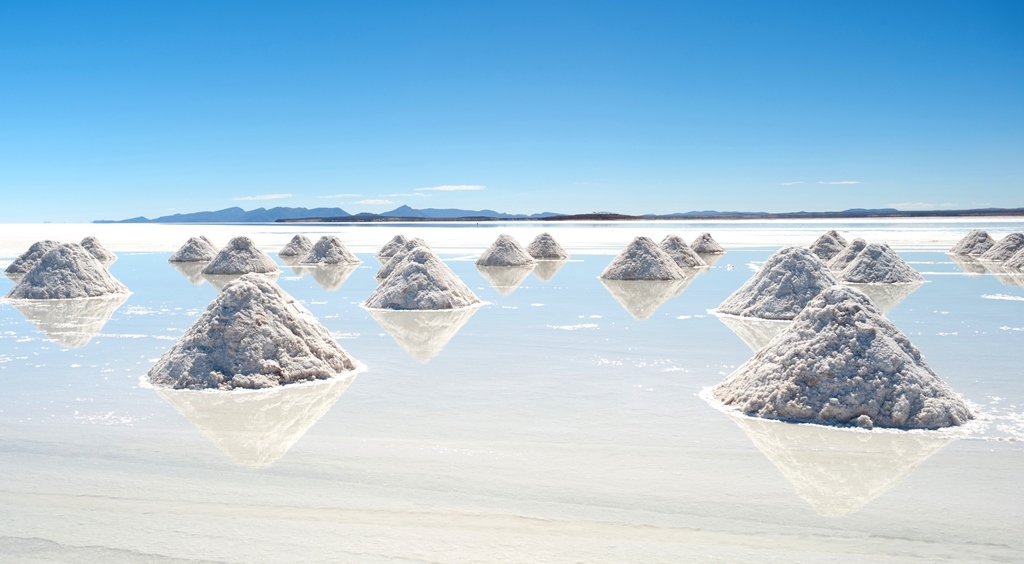- Experts state that around 50 million years ago, a head-on collision between two tectonic plates led to the formation of the Andes. These were the Nazca and the Antarctic plates that were undergoing subduction beneath the South American plate. This process has continued to this date and causes earthquakes and volcanic activity in the region.

Aerial View of the Andes - The Andes Mountains have been inhabited for centuries. One of the most recognizable civilizations from the past is the ancient Inca Empire. Inca engineers built massive and impressive sites, including Machu Picchu and the capital city of Cuzco. They also constructed roads and conduits throughout the mountain. Inca Empire, also known as Tawantinsuyu in the Quechua language, covered the entire length of the Andean range from Colombia to central Chile to northwestern Argentina.

The ancient city of Machu Picchu - The name “Andes” is believed to have come from the Quechua word “Anta”, meaning copper or “Anti”, which means “East Cardinal Point”.
- The Andes Mountain range at 4,500 miles is the longest mountain range on the Earth. It is located around the entire western coast of South America and covers a surface of 800,000 square miles. It is divided into three sections – Southern (Argentina and Chile), Central (Chilean and Peruvian cordilleras and parts of Bolivia) and Northern (Venezuela, Colombia and Northern Ecuador).

Snow Mountain, Peru - Andes mountain range spans seven countries – Venezuela, Colombia, Ecuador, Peru, Bolivia, Chile and Argentina. It is also the abode of many major cities, namely Bogota, Quito, La Paz and Cuzco.

Popular cities in the Andes (Clockwise L-R): Quito, Bogota, Cuzco and La Pas - At 22,481 feet Mount Aconcagua in Argentina is the highest peak in the Andes. This is also the highest peak in the Americas and the highest mountain outside Asia and also the highest peak in both the Southern and Western hemispheres. More than 50 peaks in the Andes are over 20,000 feet.

Mount Aconcagua in Mendoza - The Andes form a natural barrier between the continent and the Pacific Ocean, thus having a tremendous impact on the climate. Northern Andes is warm and rainy. Eastern and southwest parts of the central Andes are also wet. Western part is dry, dominated by the Atacama Desert (northern Chile). The mountains provide a rain cover over the Argentinian plains in the east, causing dry weather.
- When measured above sea level, Ojos del Salado on the Chile-Argentina border at 22,615 feet is the highest volcano in the world. This mountain range has more than 50 volcanoes that reach 19,685 feet.
- With an average discharge of about 209,000 cubic meters per second, the Amazon is the world’s largest and second longest river. It originates in the Peruvian Andes and during the wet season its width expands up to 48 kms or more. It is for these reasons that it is sometimes also called the River Sea.

Amazon river - World’s largest Salt desert – Salar de Uyuni is located in the Bolivian Andes. It is at a height of 12,160 feet and covers an area of 10,580 sq kms. While “Salar” means “salt field” in Spanish, Uyuni comes from the dusty town closest to the desert.

Bolivia’s Salar de Uyuni - The Andes terrain is known for its diversity. From Grasslands to lush forests to deserts to several high altitude lakes, it has it all! In Ecuador, rainforest areas are close to the snow covered Cotopaxi.
- The Altiplano(Spanish for “high plain”), Andean Plateau or Bolivian Plateau in west-central South America is where the Andes range is at its widest. It is also the most extensive area of high plateau on Earth after Tibet.

Desert plateau of the Altiplano - The Andes mountain range is home to a wide variety of animals and birds. It is considered to be the most important region in the world for Amphibians. There are close to 60 species of animals and more than 1,700 species of birds. The Vicuna and Guanaco are found in the Altiplano and the closely related Llama and Alpaca are domesticated and kept by the locals. The nocturnal Chinchillas live in the alpine region. The Andean Condor (the largest of its kind in the Western Hemisphere), is found throughout the Andes but at lower densities.

The animal life (Clockwise L-R): Young Alpaca, Guanacos, Vicuna, Chinchillas, Andean Condor, Llamas




Comments